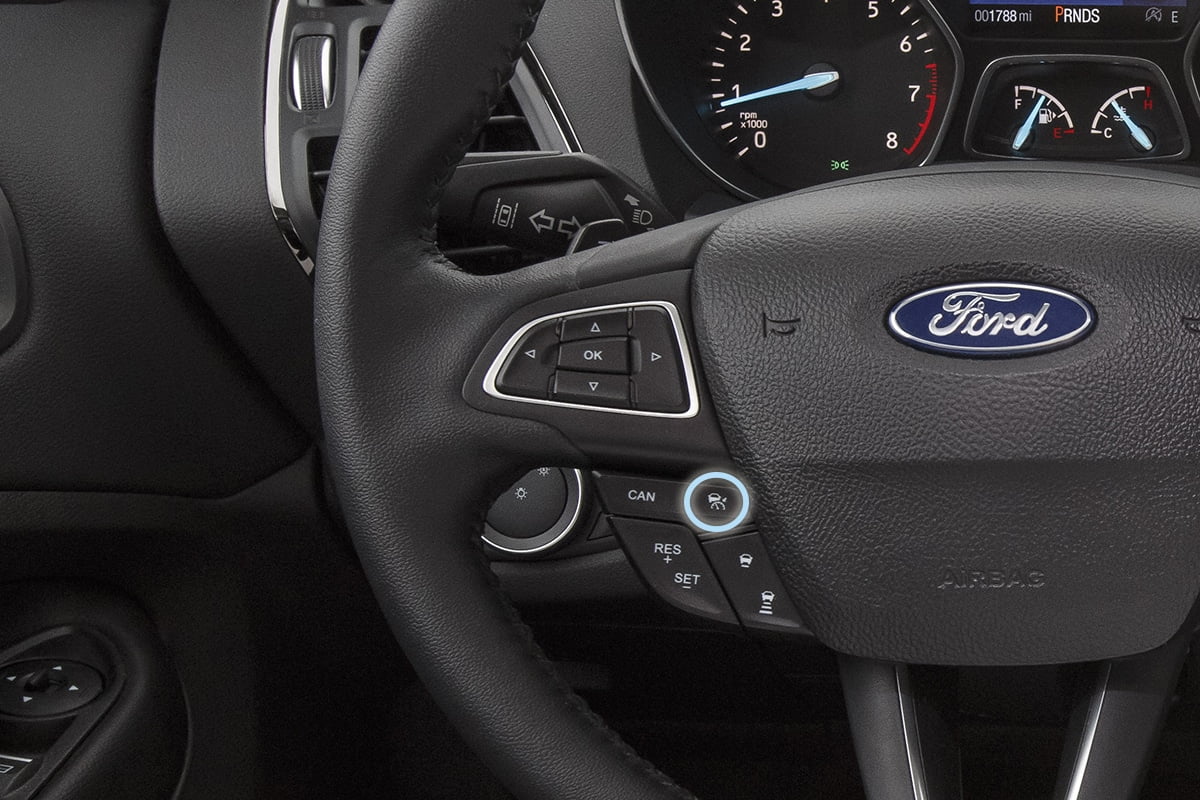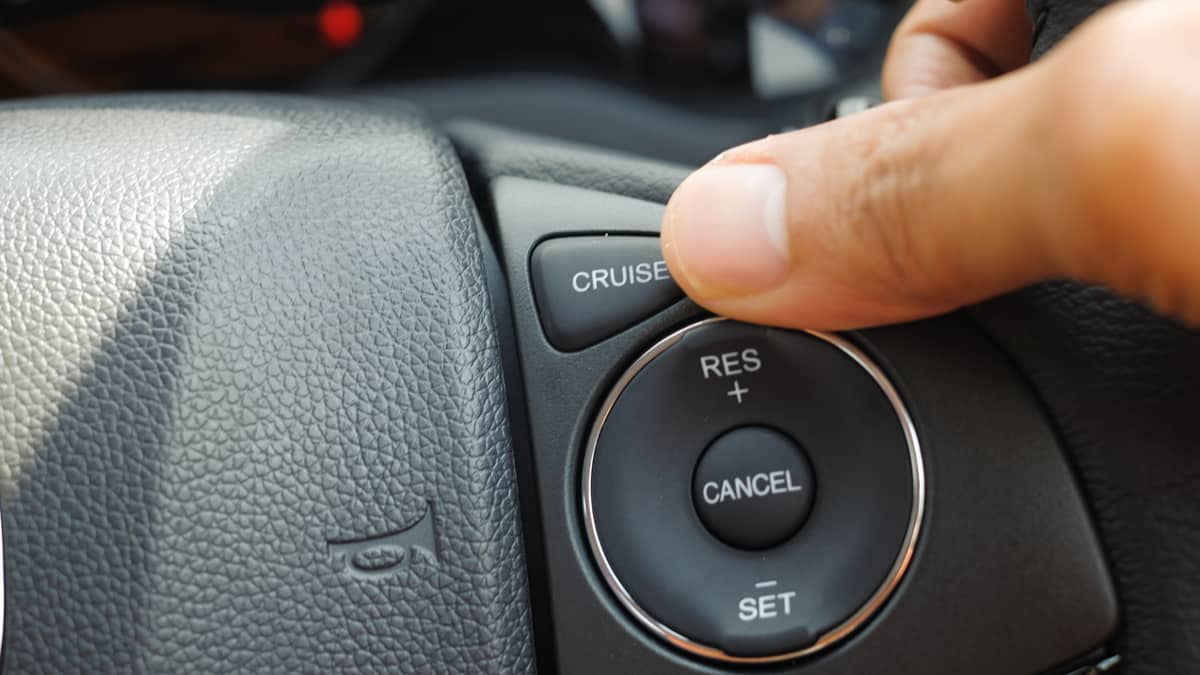Table Of Content

Even the best drivers cannot maintain exactly the same speed for mile after mile. That’s because our ankles simply can’t hold a throttle pedal in one position for much more than a minute or so at a time. As result, you will continually lift and press down on the throttle as you drive along. That constant slowing down and speeding up can be physically strenuous and it’s disastrous for fuel economy. You just set the speed you want, and it'll keep your car cruising along at that speed, no problem.
AAA reminds people to avoid cruise control during rainy weather - - CBS19 News
AAA reminds people to avoid cruise control during rainy weather -.
Posted: Mon, 15 Jan 2024 08:00:00 GMT [source]
Get Car Support Solve Any Problem
Instead of engine torque as an input we are going to use the traction force. This is a valid approach since the traction force applied at the wheel is directly proportional with the engine torque. In order to simulate an open loop and a closed loop control system and to analyze the behavior of the vehicle for a given input and disturbance, we’ll need to model it mathematically. The intention of this tutorial is to explain what an open or closed loop control system means. Also we are going to explain the differences between a feedback and a feedforward control system. The fist part of the tutorial explains the theoretical concepts of the systems, giving also real world application examples.
Tuesday's Headlines Are On Cruise Control — Streetsblog USA - Streetsblog USA
Tuesday's Headlines Are On Cruise Control — Streetsblog USA.
Posted: Tue, 30 Jan 2024 08:00:00 GMT [source]
How is adaptive cruise control different?
The driver selects the speed, then takes their foot off the accelerator, and the vehicle will cruise at the set speed. The benefits of using the cruise control feature are better fuel efficiency and reduced foot fatigue during long drives. A speed limiter will limit how fast the driver can accelerate behind the wheel. All modern vehicles contain a standard speed limiter capping speed between 120 mph and 180 mph depending to protect the vehicle’s engine and discourage reckless driving.
Browse Best Cars
The “Cancel” button, often marked with the symbol “CRUISE” or “OFF,” deactivates the cruise control system. Pressing this button disengages the system and allows the driver to regain full control over acceleration and braking. It is important to note that the brake pedal can also automatically deactivate cruise control when pressed. However, it’s a tool designed to make the driver’s task easier and less stressful. On the other hand, neither conventional nor adaptive cruise control relieves the driver of the ultimate responsibility of safely driving the car. When used appropriately, conventional and adaptive cruise control are safe.
Types of Cruise Control Systems
In this case, the driver didn’t adjust the engine torque (input) function of vehicle speed drop (output), or road gradient (disturbance). The cruise control takes its speed signal from a rotating driveshaft, speedometer cable, wheel speed sensor from the engine's RPM, or internal speed pulses produced electronically by the vehicle. Most systems do not allow the use of the cruise control below a certain speed - typically around 25 or 30 mph (40 or 48 km/h). Once the cruise control system is activated, the driver can adjust the speed using speed control buttons. These buttons allow the driver to increase or decrease the set speed in small increments. By pressing the appropriate button, the driver can fine-tune the desired speed for their comfort and road conditions.

Drivers who have the most difficulty managing their cruising speed could be using 60 per cent more fuel than they need to. Driving while fatigued is never a good idea, but even less so while using cruise control. Utilizing the system may add to your fatigue, as you give your vehicle more control of the journey. If you’re even the least bit tired, you should never turn on cruise control.
We can have an open loop control system which can adjust it’s input based on known disturbances. Knowing or measuring the amplitude and type of disturbance, the input signal can be modified in such a way that it compensate for the changing output. The engine torque being the same, the vehicle will accelerate to the same vehicle speed as in zone A. This happens because the additional opposing force, due to road gradient, becomes null and the engine torque is enough to accelerate back the vehicle.

As a failsafe, any problem with these sensors can cause the cruise control system to go offline. If you notice this happening regularly, have your vehicle diagnosed by a professional. If the cruise control on your car fails to disengage when you want to slow down, slip the vehicle into neutral to disconnect drive power from the wheels, pull over, and address the situation. Your vehicle’s cruise control system unlocks numerous benefits at the touch of a button — but according to web search data, drivers still have plenty of questions about what it is, what it does, and how it works.
Traffic Safety is Crucial to Your Business
In autonomous vehicles, cruise control systems work together with other advanced driver assistance systems (ADAS) to enable the vehicle to operate without direct driver input. These systems include lane-keeping assist, automatic emergency braking, and collision avoidance systems. Cruise control is a system that allows the driver to set their car to drive at a specific speed.
Chrysler Corporation was the first manufacturer to offer the groundbreaking mechanism as an option on several of its luxury vehicle models nine years later. Today, cruise control is rapidly becoming the standard on all new vehicles, providing drivers with increased convenience on their daily drive. The 77-GHz Autocruise radar system made by TRW has a forward-looking range of up to 492 feet (150 meters), and operates at vehicle speeds ranging from 18.6 miles per hour (30 kph) to 111 mph (180 kph).
Though fluctuations in speed may be slight, they do cause your engine to use more fuel than required. Point is, the more time you spend at a steady speed, the less fuel your engine needs. By maintaining a constant speed, cruise control also benefits a car’s efficiency.
In its capacity to ensure a vehicle remains at a steady speed, where possible, it can boost driving efficiency. According to Natural Resources Canada, varying your speed by around 6 mph every 18 seconds can be 20% more costly in terms of fuel. Cruise control, in a general sense, aims to be as efficient as possible within the parameters the driver provides, which can potentially translate to less fuel being used over time. Some drivers often have the luxury of wide, peaceful, near-empty roads.
Cruise control works by automatically adjusting the car’s throttle to maintain a set speed. Today, drivers can choose from a range of cruise control systems, each with its own unique features and functionalities. Not all cars come with cruise control as a standard feature, but many newer cars do have this option available. Additionally, aftermarket cruise control systems can be installed on most cars. The “Resume” button, also known as the “Accel” button, allows the driver to restore the previously set speed after it has been canceled or temporarily interrupted. When the driver presses the “Resume” button, the cruise control system accelerates the vehicle to the previously set speed.



No comments:
Post a Comment